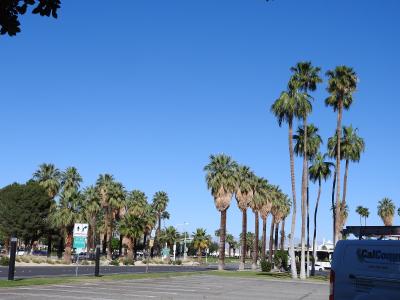-
Closing the digital divide remains a challenge
-
Tarana’s solution lies in its ngFWA technology with interference cancellation
-
The company provided demos ahead of the CCA show this week
COMPETITIVE CARRIERS ASSOCIATION, PALM SPRINGS, CALIFORNIA – Here at the Competitive Carriers Association (CAA) trade show, Tarana is everywhere. It’s on the exhibit floor and it’s hosting seminars on subjects like the Broadband Equity, Access and Deployment (BEAD) program. It’s even in trees.
Well, the tree part was on Tuesday, before the official start of the show, and it was staged in a parking lot somewhere between the Palm Springs International Airport and the JW Marriott Desert Springs Resort & Spa where the CCA is holding its show. But you get the point.
Tarana didn’t plan on hanging its 5 GHz remote node in a tree; it was by happenstance.
“We put that in the tree to demonstrate our install tool, not because we recommend that’s how you do an install,” explained George Hellmuth, head of Tarana Sales for North America.

Still, it turned out to be a pretty good turn of events. The location showed how signals were able to travel through a “very much non-line-of-sight” path, going through trees and other obstructions, he told Fierce. The base node was on a tower about eight kilometers away.
Plus, the interference was extraordinarily high – and it still worked.
Tarana’s demos, which were conducted throughout the day Tuesday in temps over 90 degrees, used both 5 GHz and the newer 6 GHz. (The company also sells products for the Citizens Broadband Radio Service (CBRS) 3.5 GHz band.)
Speed tests on site clocked in the range of 530 Mbps download and 230 Mbps upload – which, as Hallmuth pointed out – is a lot more than traditional fixed wireless and well above the FCC’s definition for broadband.
By the way, if Tarana’s pitch conjures up images of the likes of Mimosa – which was acquired by Airspan Networks in 2018 and later sold to Reliance of India – that’s because they’re in the same ball park. But Hellmuth said Tarana put a lot into designing its own system on a chip, and that largely sets it apart.
“It’s like being in a bike race and driving a car. We have so much more power and capability. That’s why we’re different,” he said.
NLOS and interference cancellation
Two of Tarana’s big breakthroughs are the ability to do non line of sight and interference cancellation, both using licensed or unlicensed spectrum, according to Carl Guardino, VP of Government Affairs & Policy.
It’s worth noting that Tarana is a 15-year-old company founded to tackle the digital divide. In the past few years, it’s been reaping the benefits of all those years of R&D and lining up customers at what appears to be a pretty steady clip.
Customers include MTN in South Africa and Rise Broadband in the U.S., but it’s also going after other ISPs, WISPs and smaller service providers, so taking part in CCA’s show is a no-brainer. A lot of rural carriers are looking for solutions that work in very challenging conditions – and it needs to be affordable.
Who knows? Maybe they'll find a solution hanging out in a tree?
Read more of our coverage from Competitive Carriers Association (CAA) here.